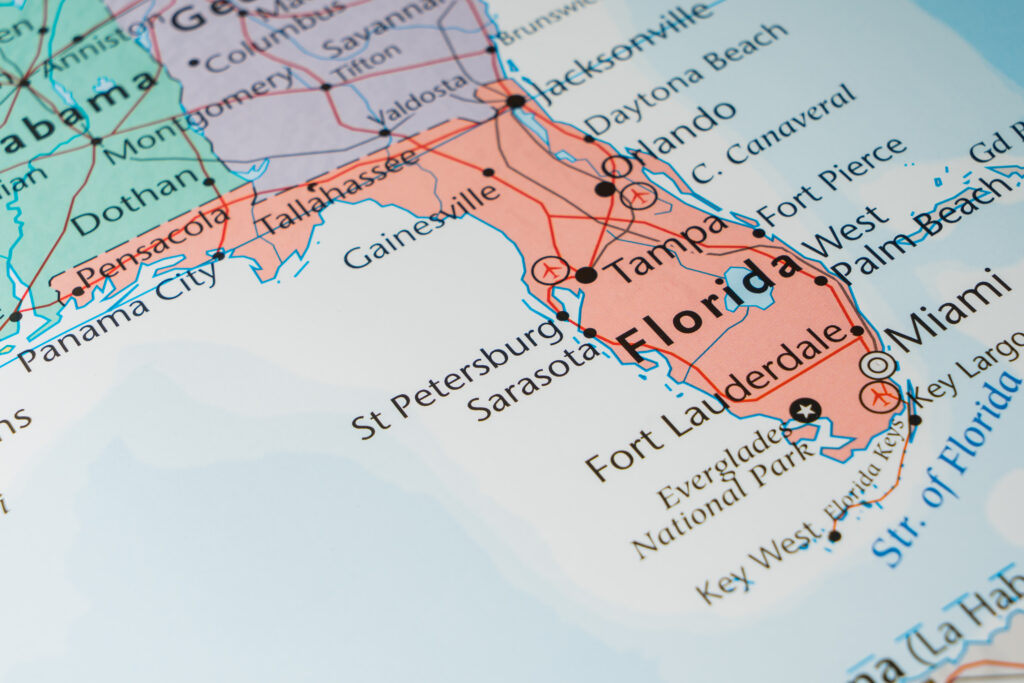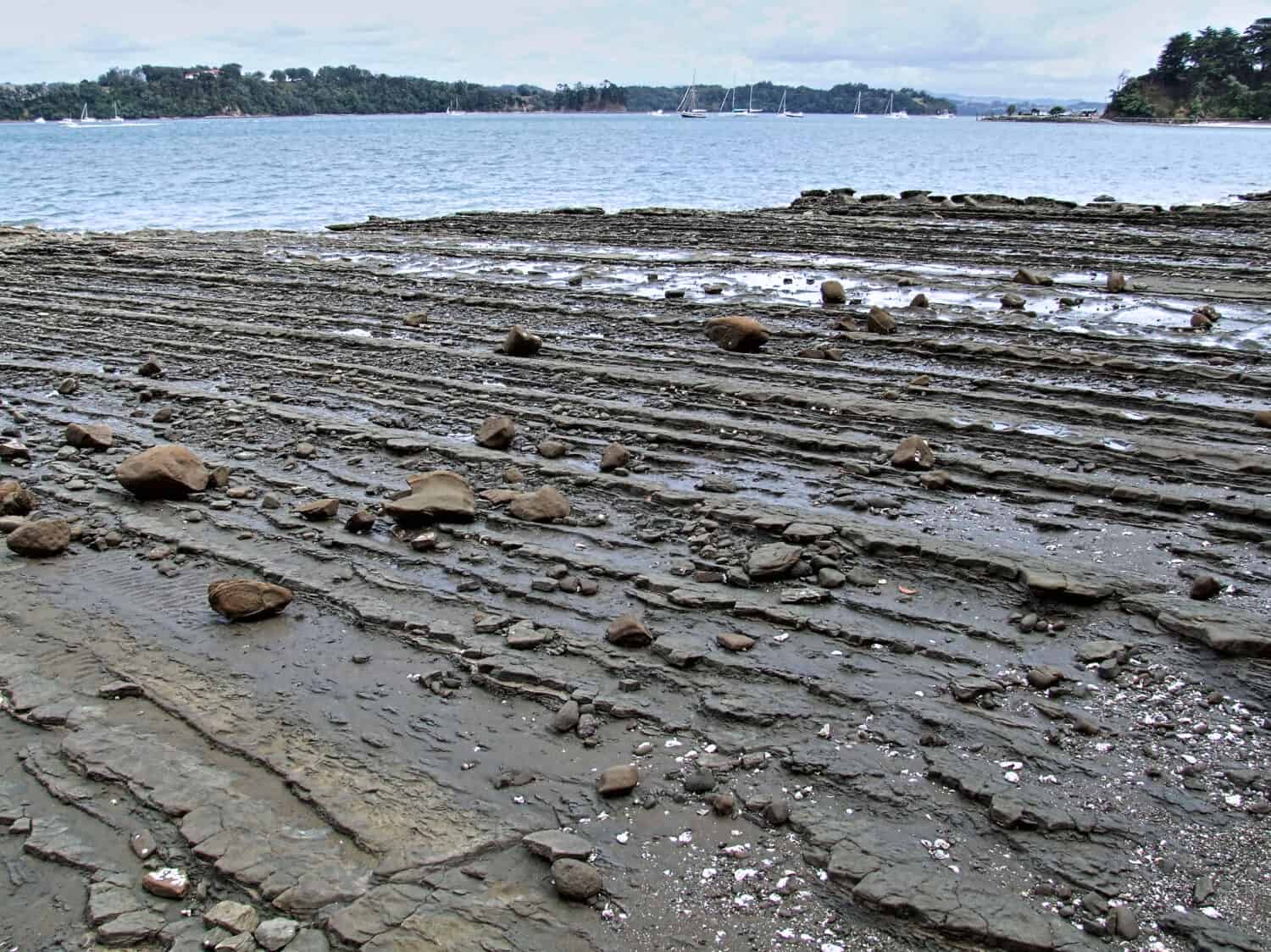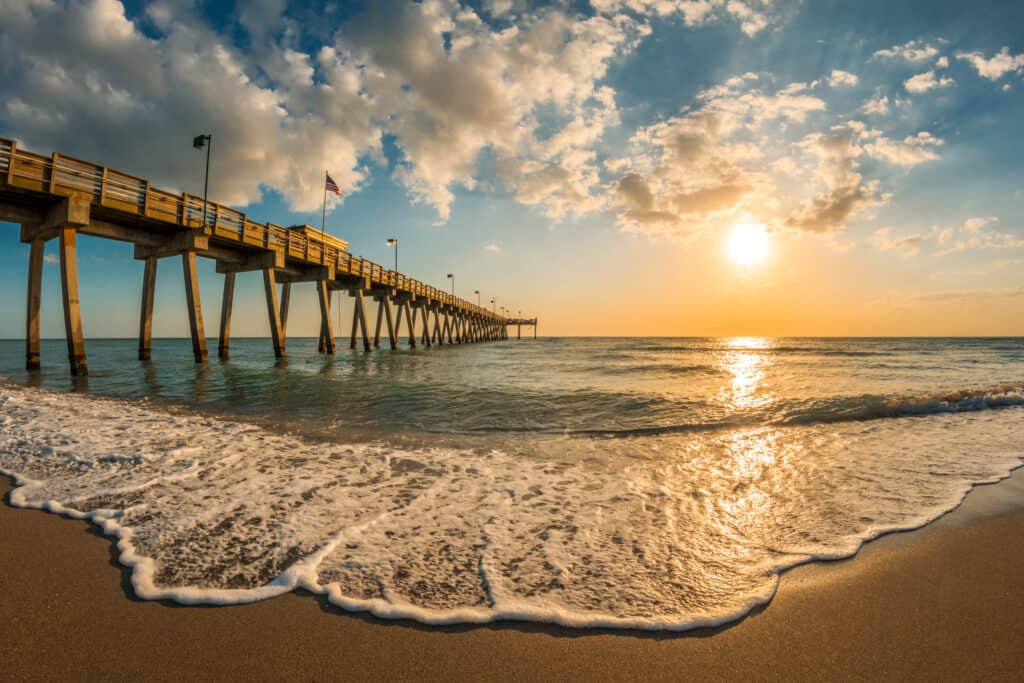Florida formed roughly 500 million years ago when Pangea broke apart and created the world we now know. To begin with, Florida’s subsurface bedrock was once a piece of Africa. The igneous and metamorphic rocks that make up Florida’s foundation were created on the northern end of the Paleozoic mega continent of Gondwana around 500 million years ago.
These rocks would jam between other rock formations for a significant portion of early history before ultimately separating to form what we now know of as Africa and South America as a result of plate tectonic action.
The End of Pangea

3D rendering of Pangea.
©ManuMata/Shutterstock.com
The current North American continent was attached to Africa, South America, and Europe between 200 and 300 million years ago. They all coexisted as Pangea, as just one continent. When a three-pronged fracture developed across Pangea, North America, South America, and Africa, initially began to split apart.
When magma would rise through the crustal weakness and rifting would begin, a volcanic rift emerged. As these split, massive pieces of Pangea divided, and volcanic explosions threw ash and volcanic debris throughout the terrain.
A gap between the expanding continents steadily widened, creating what we now know as the Atlantic Ocean. The mid-Atlantic ridge, a rift zone, kept supplying the growing ocean basin with essential volcanic raw materials.
The Creation of Florida

©Alexander Lukatskiy/Shutterstock.com
Following the rift, the crustal rock became cool. The progressive submergence of the continental plate boundary into the ocean would end up carrying Florida’s bedrock away. The sedimentary materials of the Florida Platform would begin to build up on top of these extremely old, African-born rocks.
During the subsequent 200 million years, thick strata of carbonate rock accumulated to produce Florida’s flat-topped “carbonate platform” formation.
These strata of rock, which can be two to three miles thick, are the consequence of nearly continual calcium carbonate accumulation in the warm ocean shallow waters that encircled and frequently drowned ancient Florida.
When Laurasia started breaking apart, the Florida plateau was carried northwestward to current North America. The Gulf Trough consisted of silts, clay particles, and sands from the Eocene to the Oligocene. This is when the new part of the sedimentary floor was formed.
Rising From the Water

The Florida Keys are low-lying islands in shallow waters
©Bertl123/Shutterstock.com
The Oligocene’s decreasing sea levels, expanding Antarctic ice sheets, and dropping temperatures had a significant impact on how the Florida Platform evolved. Portions of Florida began to emerge from the ocean and turn into visible land throughout this period.
Although the majority of the northeastern peninsula likely progressively became revealed as a big island there was nevertheless quite a bit of carbonate-building that took place across the varied and fluctuating underwater areas of Florida at this time. This is likely due to the declining sea levels.
Throughout the Oligocene, as areas of Florida shifted into the land, bare carbonate minerals on the raised area started to karstify because of weathering and erosion. Acidic rain and groundwater penetrate the rock during this stage. Additionally, disintegrate porous limestones and dolostones, increasing cracks and holes in the rock, compromising the crystal structure, and causing cavities and fissures in both the topmost and deeper rock layers.
Merging With North America

The Miocene Epoch decreased water levels, revealing land.
©deLoon/Shutterstock.com
The rest of Florida’s geological history became significantly impacted by the tectonic plate shifting that took place in the southern Appalachian Mountains at the beginning of the Miocene Epoch. Greater erosion brought a tremendous amount of sediment intake as a consequence of the uplift in locations downstream of the mountains.
Sediments rich in quarts accumulated over Florida with increasing strength, which would ultimately fill the Gulf Trough. Although sea levels were still rather low, they would keep changing.
Throughout the early and mid-Miocene, water would completely cover the Platform. However, a large drop in sea level by the late Miocene uncovered the majority of Florida as land. It remained a significant, albeit occasionally narrow, peninsula during the Pliocene Epoch.
Creation of Coastlines

Venice Pier, Florida, at sunset on the Gulf of Mexico.
©Jim Schwabel/Shutterstock.com
Carbonates constantly were forming in the area where the Florida Platform would be underwater. Thanks to rivers carrying sand, gravel, and clay, lowing from the north, the carbonates would mix with deposits rich in quartz.
These mixed deposits, developed throughout the Sunshine State when higher sea levels were present. Many of these formations have produced economically significant minerals like earth clay and phosphorite that we see in kitty litter and detergent.
Along Florida’s edges, sandy coastlines and barrier islands started to accumulate.
Final Thoughts
Since the creation of Florida took place underwater, it possesses a fascinating assortment of carbonate rocks that can shed light on previous ecosystems and climates. The concrete evidence of dynamic regional and worldwide changes in oceanographic, climatic, biological, and geological circumstances during the last few hundred million years is discoverable in Florida’s geological formations.
The photo featured at the top of this post is © U.F.OProductions/Shutterstock.com
Thank you for reading! Have some feedback for us? Contact the AZ Animals editorial team.







